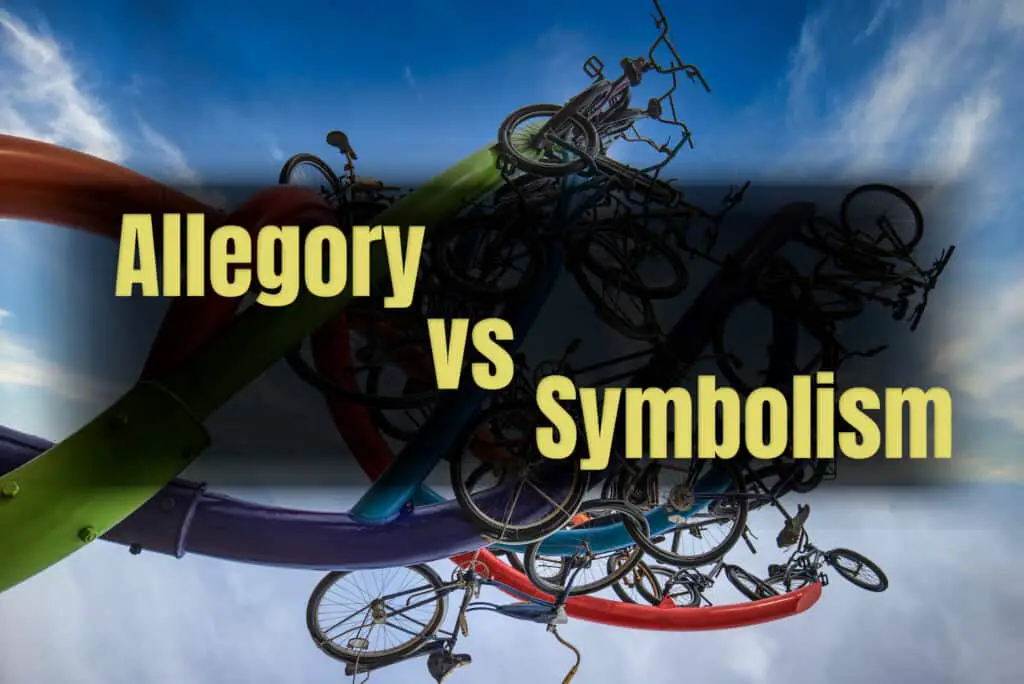In literature, allegory and symbolism are often used interchangeably. However, there is a difference between the two devices.
An allegory is a story, poem, or picture that can be interpreted to reveal a hidden meaning, usually moral or political. A symbol is an object, character, figure, or color used to represent abstract ideas or concepts.

Allegory vs. Symbolism
Allegory and symbolism are often confused because both use objects or actions to represent ideas or concepts.
However, there is a key difference between the two: an allegory is a form of extended metaphor, in which an object or action represents not just one idea, but a complex system of ideas; symbolism, on the other hand, is a more simplistic form of metaphor, in which an object or action represents a single idea.
In other words, allegory is a story or poem in which the characters, plot, and/or setting represent abstract ideas or moral concepts, while symbolism is the use of one or more objects to represent something else.
Both allegory and symbolism can be found in works of literature, art, and music. For instance, John Bunyan’s The Pilgrim’s Progress is an allegory of the Christian life, while T.S. Eliot’s The Waste Land uses symbols to represent the spiritual desolation of modern life.
In the visual arts, Vincent van Gogh’s The Starry Night is an example of symbolism, while the paintings of Hieronymus Bosch often contain allegorical elements.
While both allegory and symbolism are ways of conveying ideas or concepts through the use of objects or actions, they are not the same thing.
Allegory is a more complex and extended form of metaphor, while symbolism is a simpler form. Works of literature, art, and music often make use of both allegory and symbolism to create meaning.
Allegory Examples
The most famous example of an allegory is The Pilgrim’s Progress by John Bunyan. This Christian allegory tells the story of a man named Christian who is on a journey from his home, the City of Destruction, to the Celestial City.
Along the way, he encounters various characters and objects that symbolize different aspects of human existence. For example, Mr. Worldly Wiseman represents false religion, while the Slough of Despond represents despair.
Bunyan intended for his story to be interpreted as an allegory for the spiritual journey that every Christian must make in order to find salvation. The characters and objects in the story are meant to represent different stages in this journey and different challenges that Christians face.
Symbolism Examples
In contrast to allegory, symbolism does not usually tell a story. Rather, it uses one or more objects to represent something else. For example, in often used to represent America.
The flag is not America itself but rather an object that stands for America and everything it stands for. Other examples of symbols in the literature include the green light in The Great Gatsby and the scarlet letter worn by Hester Prynne in The Scarlet Letter.
Conclusion
Allegory and symbolism are two devices used by writers to give their stories deeper meaning. An allegory is a story with a hidden moral or political message, while a symbol is an object that represents an idea or concept. Although these two devices are often used interchangeably, they are not the same thing.
